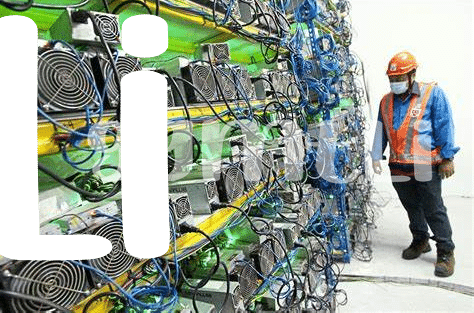Historical Context 🕰️

In the early stages of Malaysia’s crypto mining industry, the energy landscape was characterized by a burgeoning demand for power to support the increasing number of mining operations. Energy consumption levels were on the rise as miners raced to capitalize on the growing popularity of cryptocurrencies. This period marked a crucial juncture in the evolution of energy policies within the sector, as stakeholders grappled with the need to strike a balance between fostering industry growth and ensuring sustainable energy practices.
As the industry continued to expand, the historical context of energy policies in Malaysia’s crypto mining sector reflected a complex interplay of technological advancements, regulatory frameworks, and environmental considerations. This backdrop set the stage for the sector’s trajectory, laying the foundation for the impact that energy policies would have on shaping the industry’s development in the years to come.
Impact of Energy Policies 🌍
Energy policies play a crucial role in shaping the sustainability and efficiency of the crypto mining industry. These policies dictate the sources of energy used, the environmental impact of mining activities, and the overall energy consumption. By implementing strategic energy policies, Malaysia can not only regulate the energy consumption of crypto miners but also promote the use of renewable energy sources, thereby reducing the industry’s carbon footprint. This shift towards sustainable energy practices not only benefits the environment but also positions Malaysia as a leader in green crypto mining initiatives. Through a combination of regulatory frameworks and incentives, energy policies can drive positive change within the industry.
Challenges Faced by Crypto Miners ⚡

Crypto miners in Malaysia encounter various hurdles in their operations, ranging from escalating energy costs to limited access to reliable power sources. The volatile nature of cryptocurrency prices adds another layer of uncertainty, affecting profit margins and investment viability. Additionally, stringent regulations and evolving market dynamics present ongoing challenges for miners navigating this rapidly evolving landscape. Overcoming these obstacles requires innovative solutions and a proactive approach to sustainability and efficiency in energy consumption. By addressing these challenges head-on, crypto miners can adapt to the changing environment and optimize their operations for long-term success.
Regulatory Changes in Malaysia 📝

In recent years, Malaysia has witnessed significant changes in its regulatory landscape affecting the crypto mining industry. These updates have been aimed at promoting transparency and accountability, while also addressing environmental concerns. The evolving framework reflects a growing recognition of the importance of sustainable practices in crypto mining operations.
To learn more about how other countries are approaching energy regulations in the Bitcoin mining sector, check out this insightful article on bitcoin mining energy regulations in Lesotho.
Sustainability Efforts in the Industry 🌱
Indeed, the industry’s commitment to sustainable practices is gradually gaining momentum. As energy consumption concerns rise, crypto mining entities in Malaysia are increasingly embracing eco-friendly initiatives. Integrating renewable energy sources such as solar and hydroelectric power not only reduces carbon footprint but also enhances operational efficiency. Furthermore, the implementation of energy-efficient mining hardware and cooling systems is becoming a prevailing trend in fostering sustainability within the industry. Amid growing environmental consciousness, these concerted efforts signify a shift towards a greener and more sustainable future for crypto mining operations in Malaysia.
Future Outlook and Potential Advancements 🔮

In looking ahead to the future of the crypto mining industry in Malaysia, there is an array of potential advancements that could shape its trajectory. With a growing emphasis on sustainability, we anticipate a shift towards more eco-friendly mining practices, harnessing renewable energy sources and adopting innovative technologies to enhance efficiency. Additionally, collaborations between industry players and policymakers are likely to drive the development of clearer regulatory frameworks that balance environmental concerns with the industry’s growth. As advancements in technology continue to unfold, such as the evolution of more energy-efficient mining hardware and improved cooling solutions, the industry is poised for significant transformations. These potential advancements not only hold promise for the industry’s sustainability but also pave the way for greater integration with Malaysia’s broader energy landscape. To explore further about the evolving landscape of energy policies in cryptocurrency mining, considering global perspectives is essential. For instance, examining Bitcoin mining energy regulations in Liberia could offer valuable insights into how different regions are approaching this critical issue.bitcoin mining energy regulations in liberia
